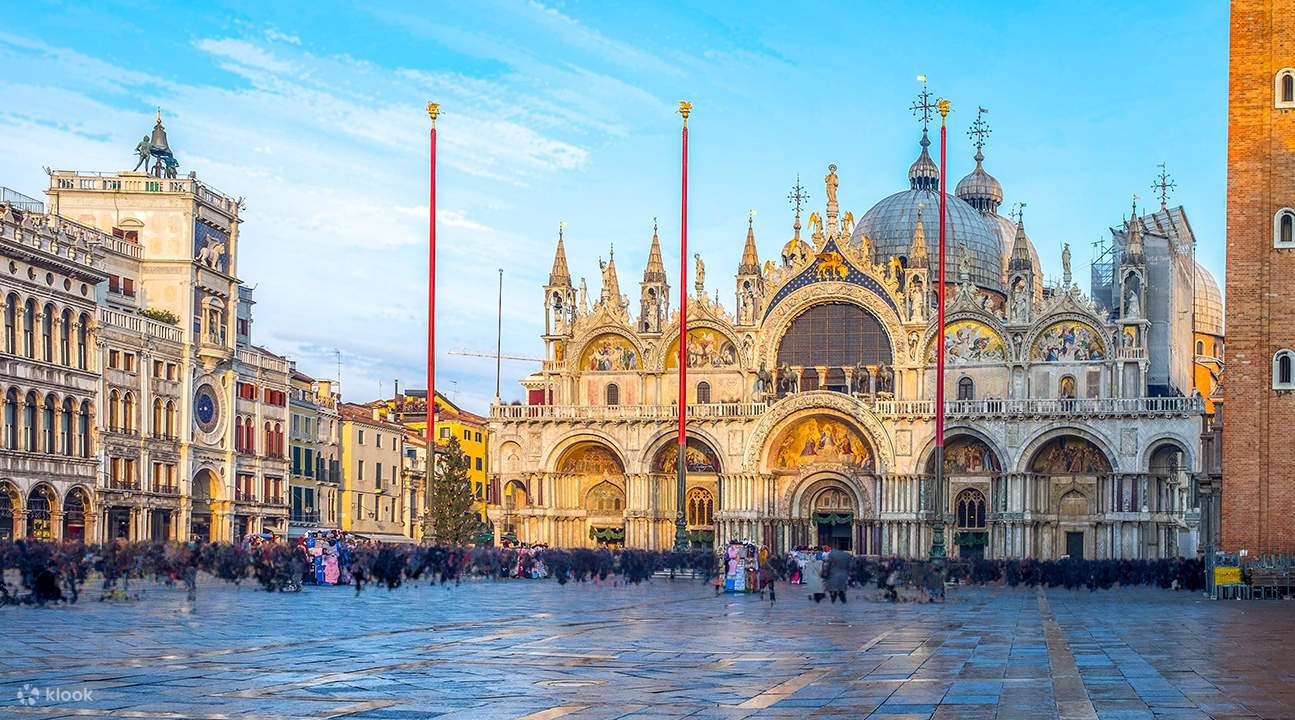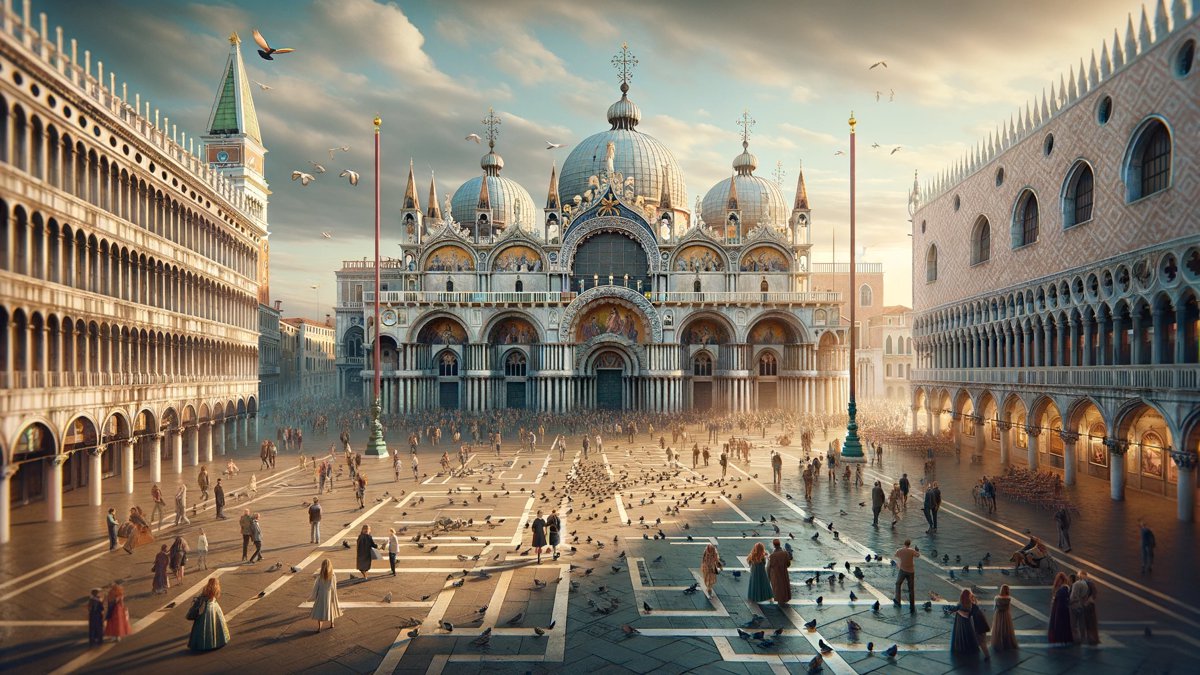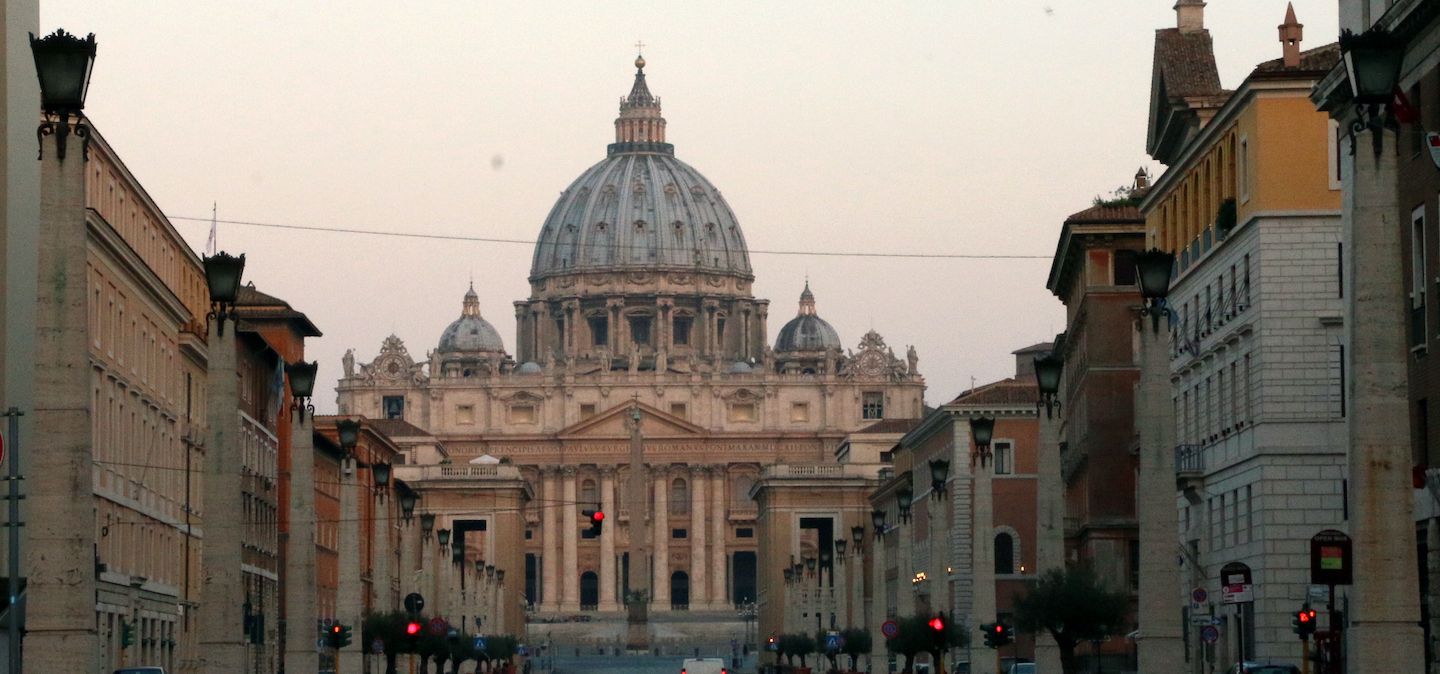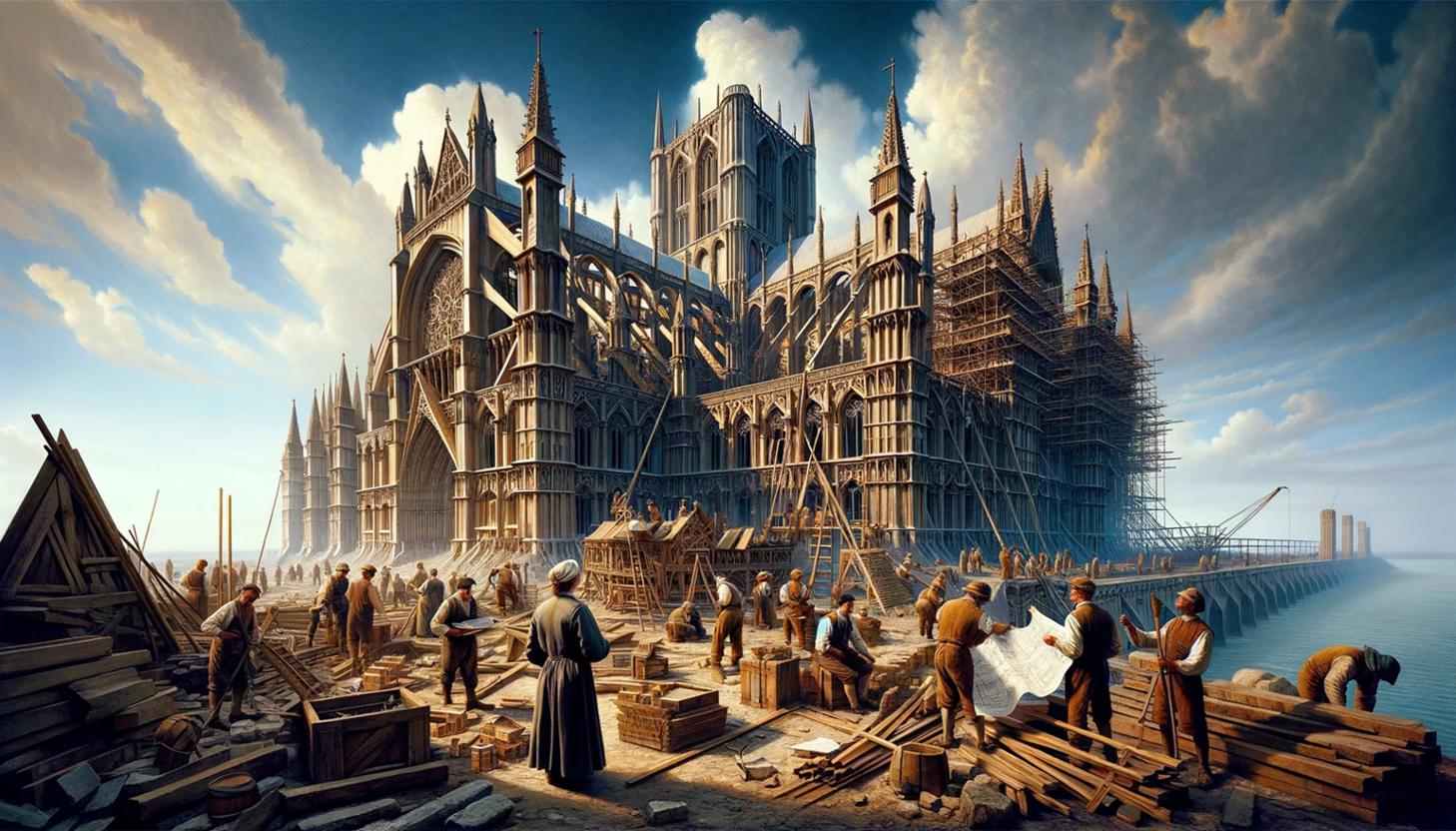Home>Arts and Culture>When Was St. Mark’s Basilica Built
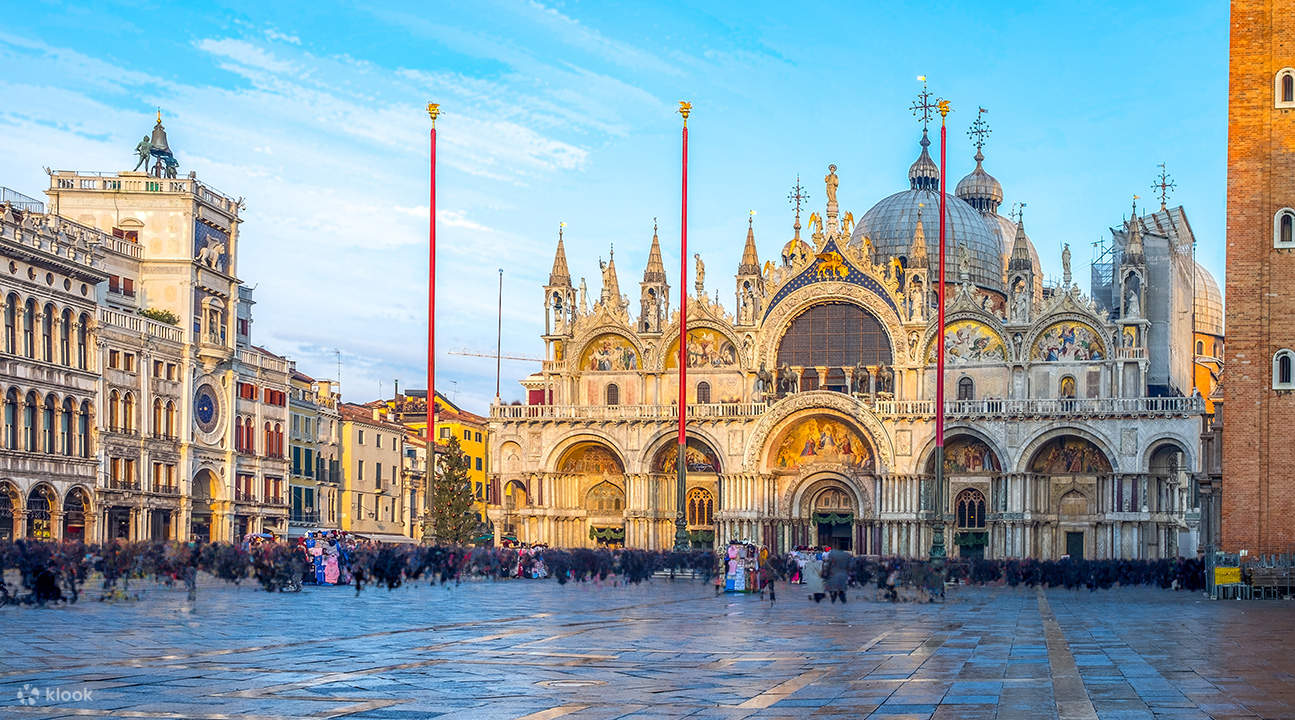

Arts and Culture
When Was St. Mark’s Basilica Built
Published: February 10, 2024
Ericka Andersen, an editor at Christian.net, expertly merges digital strategy with content creation, focusing on faith and societal issues. Her communication skills enhance the platform's engaging narratives, fostering meaningful dialogue on belief's impact on society.
Discover the rich history of St. Mark's Basilica, an iconic symbol of arts and culture, and learn about its construction and significance. Uncover the timeless beauty of this architectural masterpiece.
(Many of the links in this article redirect to a specific reviewed product. Your purchase of these products through affiliate links helps to generate commission for Christian.net, at no extra cost. Learn more)
Table of Contents
Introduction
St. Mark's Basilica, an architectural masterpiece nestled in the heart of Venice, Italy, stands as a testament to the city's rich history and cultural heritage. This iconic basilica, with its opulent domes and intricate mosaics, has captivated visitors for centuries, drawing them into a world of unparalleled beauty and spiritual significance.
The basilica's origins can be traced back to the 9th century when Venetian merchants smuggled the relics of St. Mark the Evangelist from Alexandria, Egypt, to Venice. This daring act laid the foundation for the construction of the basilica, which would later become a symbol of Venetian power and prestige.
As one approaches St. Mark's Basilica, the grandeur of its Byzantine and Gothic architecture commands attention, evoking a sense of awe and reverence. The exterior, adorned with marble columns and intricate carvings, exudes a timeless elegance that has withstood the test of time.
Upon stepping inside, visitors are enveloped by a symphony of colors and light, emanating from the breathtaking mosaics that adorn the interior walls and domes. These mosaics, meticulously crafted with gold leaf and vibrant hues, depict biblical scenes and saints, transporting visitors to a realm of divine beauty and spiritual contemplation.
St. Mark's Basilica stands not only as a place of worship but also as a living testament to the artistic and cultural exchange between the East and the West. Its architectural elements, influenced by Byzantine, Romanesque, and Gothic styles, reflect the diverse cultural influences that have shaped Venice's identity over the centuries.
Today, St. Mark's Basilica continues to draw pilgrims, art enthusiasts, and history aficionados from around the globe, inviting them to immerse themselves in the splendor of its sacred spaces and artistic treasures. Its enduring allure serves as a reminder of the enduring legacy of St. Mark and the enduring spirit of Venetian craftsmanship and creativity.
In the following sections, we will delve deeper into the history, construction, architectural features, and the significance of St. Mark's Basilica, unraveling the layers of its captivating narrative and shedding light on its timeless appeal.
Read more: When Was Basilica Of St. Denis Built
History of St. Mark's Basilica
The history of St. Mark's Basilica is a tapestry woven with the threads of religious devotion, political intrigue, and cultural exchange. It all began in the 9th century when Venetian merchants, driven by a fervent desire to elevate the status of their city, embarked on a daring mission to acquire the relics of St. Mark the Evangelist from Alexandria, Egypt. This audacious act of smuggling the saint's remains into Venice laid the foundation for the construction of the basilica that would enshrine the sacred relics.
The establishment of St. Mark's Basilica not only solidified Venice's status as a prominent center of trade and commerce but also elevated its spiritual significance. The relics of St. Mark became a symbol of divine protection for the city, and the basilica served as a tangible manifestation of Venetian power and prestige.
Over the centuries, the basilica bore witness to the ebb and flow of Venice's fortunes, surviving fires, political upheavals, and the ravages of time. Its enduring presence stood as a testament to the resilience and unwavering faith of the Venetian people.
The history of St. Mark's Basilica is also intertwined with the cultural exchange between the East and the West. Venice's position as a maritime powerhouse facilitated the influx of artistic and architectural influences from Byzantium and the Mediterranean, shaping the distinctive blend of Byzantine, Romanesque, and Gothic elements that adorn the basilica's façade and interior.
The basilica's storied past is also marked by the remarkable craftsmanship of renowned artists and artisans who contributed to its embellishment. The breathtaking mosaics, intricate marble floors, and ornate altars bear the imprint of master craftsmen whose dedication to their artistry has left an indelible mark on the basilica's legacy.
Today, the history of St. Mark's Basilica continues to unfold, drawing visitors into its captivating narrative and inviting them to immerse themselves in the timeless allure of this architectural marvel. As the custodian of centuries of history and cultural exchange, the basilica stands as a living testament to the enduring spirit of Venice and the indelible legacy of St. Mark the Evangelist.
Construction of St. Mark's Basilica
The construction of St. Mark's Basilica stands as a testament to the unwavering devotion and ingenuity of the Venetian people, who sought to create a sacred edifice befitting the relics of St. Mark the Evangelist. The basilica's inception can be traced back to the 9th century, following the daring acquisition of the saint's remains from Alexandria, Egypt. This pivotal event ignited a fervent determination to erect a grand monument that would enshrine the revered relics and exalt the spiritual significance of Venice.
The architectural evolution of St. Mark's Basilica reflects the convergence of diverse cultural influences, resulting in a harmonious blend of Byzantine, Romanesque, and Gothic elements. The basilica's façade, adorned with intricate marble columns, sculpted reliefs, and majestic arches, exudes a timeless elegance that captivates the beholder. The interplay of light and shadow across the façade accentuates its intricate details, evoking a sense of awe and reverence.
The construction of the basilica's interior is a symphony of artistic mastery, as evidenced by the resplendent mosaics that adorn the walls and domes. These mesmerizing mosaics, crafted with meticulous precision using gold leaf and vibrant hues, depict biblical narratives, saints, and celestial motifs, transporting visitors into a realm of divine splendor and spiritual contemplation.
The basilica's central dome, a crowning achievement of Byzantine architecture, soars above the sanctuary, adorned with intricate mosaics that depict the heavenly realm. The interplay of golden hues and celestial blues creates an ethereal ambiance, inviting visitors to gaze heavenward in wonder and reverence.
The construction of St. Mark's Basilica was not without its challenges, as the marshy foundations of Venice posed engineering obstacles that demanded innovative solutions. The builders ingeniously employed wooden pilings to support the basilica's structure, laying the groundwork for its enduring resilience against the Venetian lagoon's shifting tides and the passage of time.
As the construction of St. Mark's Basilica reached its culmination, the edifice stood as a testament to the unwavering faith and artistic prowess of the Venetian craftsmen and artisans who dedicated themselves to its creation. Their labor of love yielded an architectural marvel that transcends time, inviting visitors to behold the splendor of a sacred sanctuary that embodies the enduring spirit of Venice and the legacy of St. Mark the Evangelist.
Architectural Features
The architectural features of St. Mark's Basilica are a testament to the ingenuity and artistic mastery of the craftsmen who contributed to its construction. The basilica's façade, a captivating blend of Byzantine, Romanesque, and Gothic elements, beckons visitors into a world of timeless elegance and spiritual grandeur. Adorned with intricate marble columns, sculpted reliefs, and majestic arches, the façade exudes a sense of opulence and reverence. The interplay of light and shadow across the façade accentuates its intricate details, creating a mesmerizing visual spectacle.
Upon entering the basilica, visitors are enveloped by a symphony of colors and light emanating from the resplendent mosaics that adorn the interior walls and domes. These intricate mosaics, meticulously crafted with gold leaf and vibrant hues, depict biblical narratives, saints, and celestial motifs, transporting visitors into a realm of divine splendor and spiritual contemplation. The interplay of golden hues and celestial blues creates an ethereal ambiance, inviting visitors to gaze heavenward in wonder and reverence.
The central dome of St. Mark's Basilica stands as a crowning achievement of Byzantine architecture, soaring above the sanctuary with awe-inspiring grandeur. Adorned with intricate mosaics that depict the heavenly realm, the dome captivates the beholder with its celestial beauty. The mesmerizing interplay of light and color within the dome creates an immersive experience, evoking a sense of transcendence and spiritual elevation.
The basilica's interior also boasts a remarkable display of opulent materials and exquisite craftsmanship. The intricately patterned marble floors, adorned with geometric designs and ornate motifs, bear the hallmark of master artisans whose dedication to their craft is evident in every detail. The ornate altars, embellished with precious metals and gemstones, stand as a testament to the basilica's enduring legacy of artistic splendor and spiritual devotion.
The architectural features of St. Mark's Basilica not only reflect the convergence of diverse cultural influences but also embody the unwavering faith and artistic prowess of the Venetian craftsmen and artisans who dedicated themselves to its creation. As visitors traverse the sacred spaces of the basilica, they are transported into a realm where the boundaries between the earthly and the divine dissolve, leaving them in awe of the enduring legacy of St. Mark and the timeless allure of Venetian craftsmanship and creativity.
Significance and Legacy
The significance and legacy of St. Mark's Basilica transcend the boundaries of time and space, weaving together a narrative of spiritual devotion, cultural exchange, and artistic splendor. As a revered sanctuary enshrining the relics of St. Mark the Evangelist, the basilica holds profound religious significance for both Venetians and pilgrims from around the world. The relics of St. Mark, brought to Venice in the 9th century, became a symbol of divine protection for the city, elevating its spiritual prestige and fostering a deep sense of reverence among the faithful.
Beyond its religious importance, St. Mark's Basilica stands as a living testament to the enduring legacy of Venetian craftsmanship and creativity. The architectural fusion of Byzantine, Romanesque, and Gothic elements reflects the cultural exchange between the East and the West, embodying the cosmopolitan spirit of Venice as a maritime powerhouse. The basilica's façade, adorned with intricate marble columns and sculpted reliefs, exudes a timeless elegance that captivates visitors, while the resplendent mosaics within depict biblical narratives and celestial motifs, inviting contemplation and awe.
The legacy of St. Mark's Basilica extends beyond its architectural splendor, encompassing centuries of artistic patronage and cultural enrichment. The basilica served as a hub for the flourishing of Byzantine art in the West, inspiring generations of artists and craftsmen to create masterpieces that adorned its sacred spaces. The enduring allure of the basilica continues to draw art enthusiasts and history aficionados, inviting them to immerse themselves in the opulent mosaics, intricate marble floors, and ornate altars that bear the imprint of master artisans.
Furthermore, St. Mark's Basilica stands as a symbol of Venetian resilience and unwavering faith, having withstood fires, political upheavals, and the passage of time. Its enduring presence amidst the ever-changing tides of the Venetian lagoon serves as a testament to the indomitable spirit of the Venetian people and their commitment to preserving their cultural heritage.
In essence, the significance and legacy of St. Mark's Basilica are intertwined with the rich tapestry of Venetian history and the enduring spirit of artistic and spiritual expression. As visitors traverse its sacred spaces, they are not only transported into a realm of divine beauty and cultural exchange but also invited to partake in the timeless legacy of St. Mark and the indelible mark left by centuries of Venetian craftsmanship and creativity.

